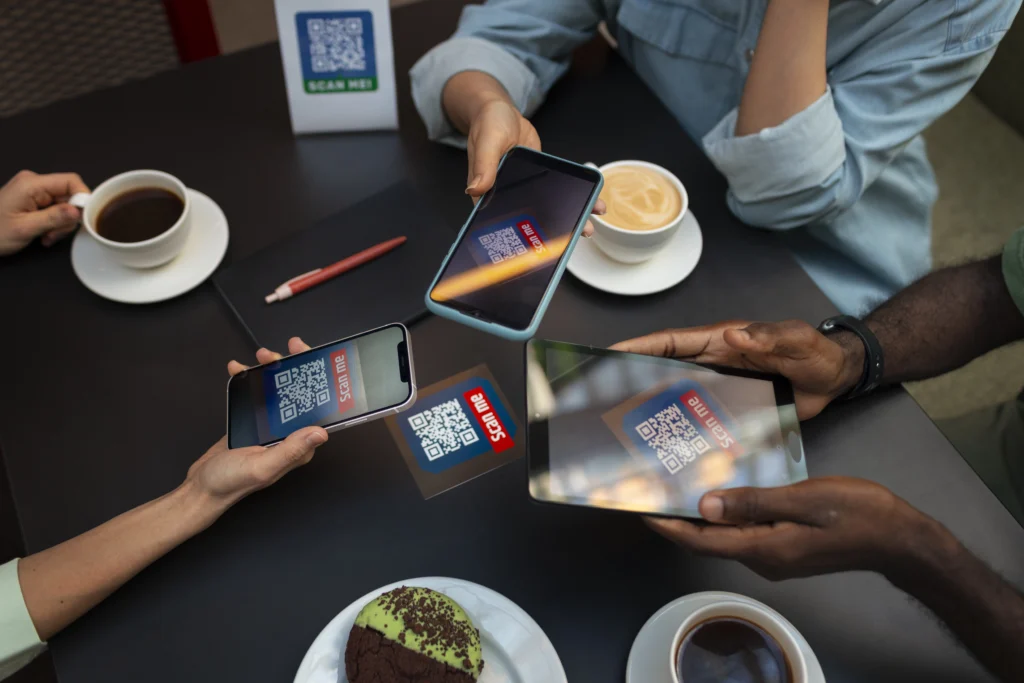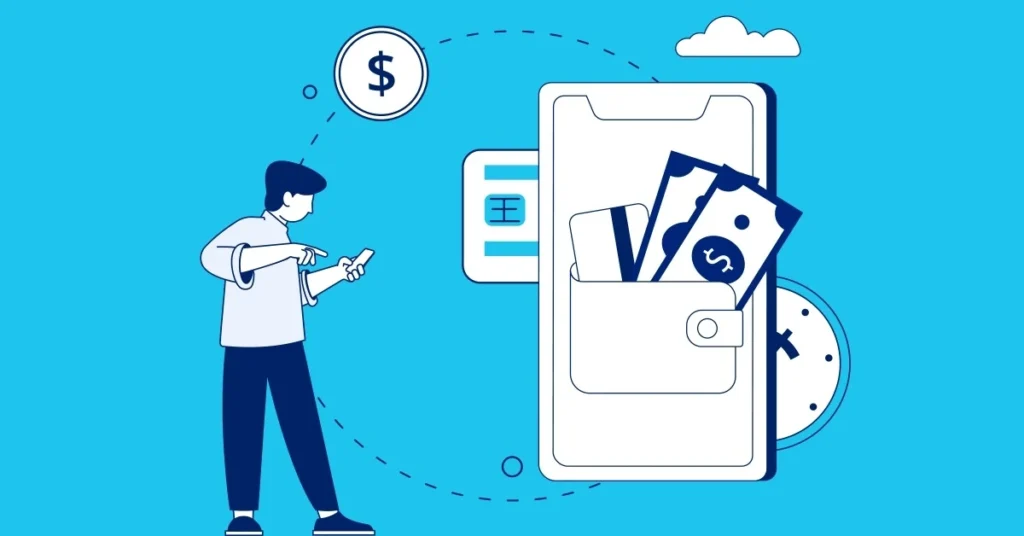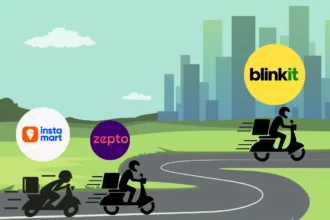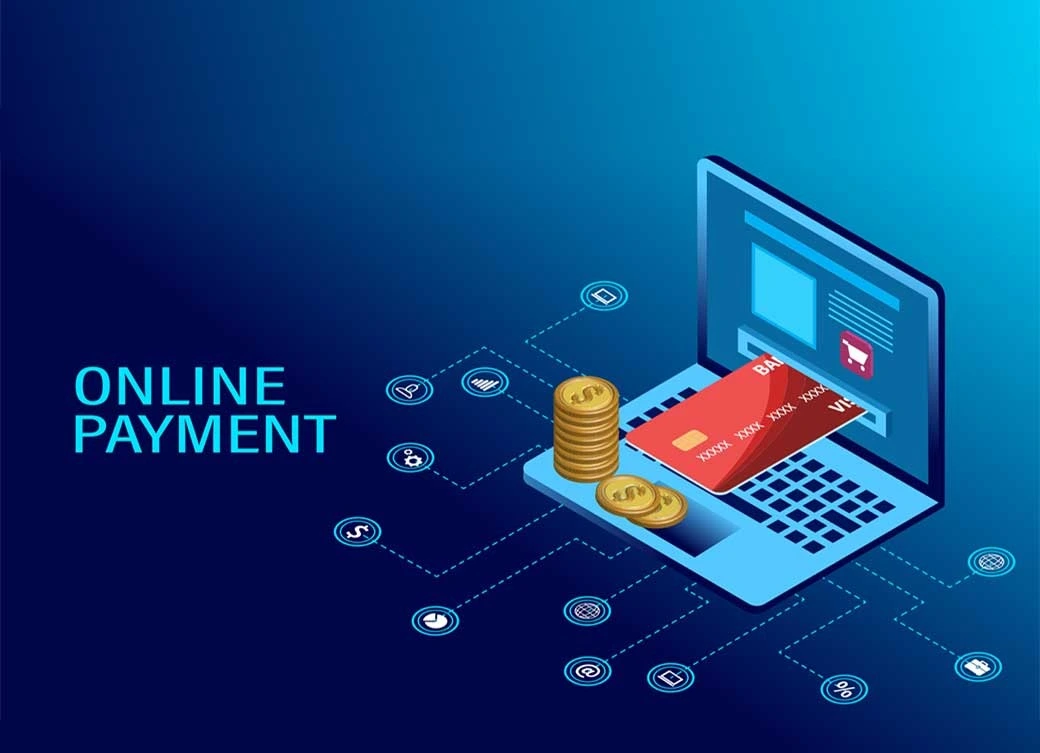Estimated Reading Time: 34-36 minutes ( 6,688 words)
Introduction
In less than a decade, Apple Pay and Google Pay have turned mobile payments from a futuristic concept into an everyday behavior. Today, billions of users tap their phones instead of swiping cards or handling cash — redefining convenience and security in digital finance. Yet, even as these platforms dominate, the next phase of digital payments is already emerging: a future shaped by open ecosystems, government-backed infrastructure, and new forms of programmable money.
The evolution is being powered by instant payment rails like India’s UPI, Brazil’s Pix, and Europe’s SEPA Instant, which enable frictionless transfers without intermediaries. At the same time, embedded finance models such as “Buy Now, Pay Later” (BNPL), tokenized assets, and digital identity verification are merging financial services with everyday platforms — from e-commerce to gaming. According to McKinsey & Company (2024), the global digital payments market is projected to exceed $14 trillion by 2027, with wallets accounting for more than half of all online transactions.
For consumer-facing brands, fintech startups, and content creators, this transformation represents a massive opportunity. Digital wallets are no longer just payment tools — they are becoming gateways to commerce, lending, and even investment ecosystems. However, this growth also brings new challenges: privacy concerns, data security, and regulatory uncertainty. As we move toward a “wallet economy,” understanding these shifts isn’t optional — it’s essential for anyone aiming to thrive in the next decade of digital finance.

Quick Take: 5 Headline Trends in Digital Wallets (2025)
The global digital payments landscape is evolving faster than ever. From India’s UPI dominance to the rise of CBDCs (Central Bank Digital Currencies), 2025 marks a turning point where wallets evolve from payment tools to financial ecosystems. Here are the five headline trends shaping the next decade:
1. UPI-Style Instant Payment Rails Go Global
India’s Unified Payments Interface (UPI) has become the global benchmark for real-time, low-cost digital payments. In 2024 alone, UPI processed over 12 billion transactions per month, according to The Times of India, setting records for both scale and speed. Countries like Singapore (PayNow), Brazil (Pix), and the UAE (Aani) are following the model — enabling instant, cross-border interoperability. As these systems mature, expect governments and fintechs to partner for real-time, frictionless, and low-cost transfers worldwide.
2. Wallets Evolve into “Super-Apps”
Digital wallets are no longer just for payments — they are transforming into super-apps that integrate banking, investing, insurance, loyalty, and shopping. Platforms like Paytm, PhonePe, and GrabPay are leading this shift in Asia, while Apple Pay and Google Pay are adding financial dashboards and merchant integrations. As per Business of Apps (2025), this “wallet-as-a-platform” model increases user stickiness and lifetime value, especially in emerging markets.
3. BNPL Embedded Inside Wallets
“Buy Now, Pay Later” (BNPL) services are now embedded directly inside digital wallets, allowing users to split payments or extend credit with one tap. This drives higher average order values and stronger customer retention for merchants. However, as noted by GlobeNewswire, regulators in India, the EU, and the US are tightening BNPL rules to prevent over-lending and hidden charges — signaling a phase of more responsible growth.
4. CBDCs & Programmable Money Integration
Central Bank Digital Currencies (CBDCs) — like India’s e₹ (Digital Rupee) and China’s e-CNY — are starting to integrate into mainstream wallets. According to the Atlantic Council’s CBDC Tracker (2025), over 134 countries are exploring or piloting CBDCs. While they won’t immediately replace cash or crypto, they will function as programmable, government-backed settlement layers — enabling traceable, instant transfers and new financial instruments.
5. Rising Fraud & Cybersecurity Challenges
As transactions surge, fraud and cyberattacks are rising in tandem. NDTV (2025) reports that India alone saw a 45% jump in digital payment fraud cases last year, prompting the RBI to tighten guidelines around KYC and two-factor authentication. Global wallets are now deploying AI-driven fraud detection, biometric verification, and real-time behavioral analysis to protect consumers — but user education remains the ultimate defense.
🟢 In summary:
The next phase of digital wallets is about platformization, interoperability, and intelligent regulation. India continues to lead innovation, but the lessons are global — every fintech, merchant, and creator must adapt to this new “wallet economy.”
Market Snapshot — Global + India (Latest 2025 Data)
The global digital wallet landscape is expanding at record pace, driven by smartphone penetration, instant payment infrastructure, and a surge in embedded finance models. Both global giants (Apple Pay, Google Pay, PayPal) and local ecosystems (UPI in India, Pix in Brazil, Alipay/WeChat Pay in China) are shaping the next phase of financial inclusion.
🌍 Global Overview: 2025 Snapshot
Digital wallets have become the default payment interface for more than 2 billion people worldwide — a figure expected to cross 3.5 billion by 2030, according to Business of Apps (2025) and Statista projections. Even amid economic uncertainty and inflationary cycles, McKinsey’s Global Payments Report 2025 shows payment revenues maintaining a steady compound annual growth rate (CAGR) of 6–8% through the decade, led by Asia-Pacific and emerging markets.
Mobile wallets now account for over half of global e-commerce payments and nearly one-third of all in-store transactions, as contactless adoption grows across Europe, North America, and Africa. Cross-border payments are also accelerating — fintechs are partnering with regional real-time payment networks to lower fees and settlement times.
🍎 Apple Pay & Google Pay: Still Dominant but Facing New Competition
Apple Pay remains the world’s largest proprietary mobile wallet, reaching an estimated 624 million global users in 2025 (source: Capital One Shopping Research). It holds dominant positions in the U.S., U.K., Japan, and Western Europe, thanks to its hardware integration and focus on privacy.
Google Pay / Google Wallet, meanwhile, retains strong adoption in India, the U.S., Singapore, and parts of Southeast Asia, though its user base is fragmented across multiple markets. Both platforms have become core pillars in mobile commerce, yet their growth is slowing compared to regionally-led ecosystems like UPI and Alipay. In short, Apple Pay and Google Pay are big — but they’re no longer the whole story.
🇮🇳 India: The Standout Success Story
India’s payments revolution continues to outpace global peers. According to NPCI and RBI data (The Times of India, Oct 2025), the Unified Payments Interface (UPI) recorded a staggering 20.7 billion transactions worth ₹27.28 lakh crore ($327 billion) in a single month. That’s more than the entire population of India transacting multiple times per week — reflecting not just adoption, but deep behavioral change.
Merchant acceptance has expanded from metro cities to Tier-3 and rural India, supported by QR code ubiquity, zero-MDR (merchant discount rate) policies, and government-backed incentives. UPI’s integration with credit lines (UPI Lite, UPI Credit), cross-border corridors (Singapore, UAE), and upcoming “UPI for Global” pilots position it as the world’s most scalable real-time payment infrastructure.
💳 BNPL Inside India’s Wallet Economy
The Buy Now, Pay Later (BNPL) segment has become a key growth lever in India’s wallet ecosystem. As per GlobeNewswire (2025) and Research & Markets, India’s BNPL market is estimated between USD 21–31 billion in 2025, with projected CAGR of 20–36% through 2030.
Digital wallets and merchant checkouts (Paytm Postpaid, LazyPay, Simpl, Amazon Pay Later) are embedding short-term credit directly at the point of sale — boosting average order value (AOV) and user retention. However, regulatory scrutiny is increasing, with the RBI emphasizing transparent terms and responsible lending practices.
💠 CBDC (Digital Rupee) and Programmable Money
India’s Central Bank Digital Currency (CBDC) — the Digital Rupee (e₹) — is in advanced pilot stages for both retail and wholesale use, led by the Reserve Bank of India (RBI). According to the Atlantic Council’s CBDC Tracker (2025), India is among the top three most active CBDC testing nations globally, alongside China and Nigeria.
Over 1.5 million users and 300,000 merchants are now part of the pilot, with trials covering real-time settlement, programmable use cases, and offline payments. CBDC integration into mainstream wallets could enable interoperable, instant, and transparent money flows, shaping the next evolution of financial inclusion.
📊 Key Numbers (2025)
| Metric | Latest 2025 Figure | Source |
| UPI Transactions (Oct 2025) | 20.7 billion; ₹27.28 lakh crore | The Times of India / NPCI |
| Global Mobile Payments Users | >2 billion | Business of Apps / Statista |
| Apple Pay Active Users | ~624 million | Capital One Shopping Research |
| India BNPL Market Size | USD 21–31 billion | GlobeNewswire / Research & Markets |
| India CBDC Pilot (Digital Rupee) | 1.5M+ users; 300K merchants | Atlantic Council / RBI |
🟩 In summary:
The data paints a clear picture — digital wallets have become the world’s new financial infrastructure. India leads in scale, innovation, and regulatory agility, while Western markets continue to dominate premium wallet ecosystems. Over the next five years, the battle won’t be about who enables payments — but who controls the ecosystem around commerce, credit, and data.
Technology & Product Trends Shaping the Future of Digital Wallets
The digital wallet revolution is no longer just about payments — it’s about building intelligent, interoperable financial ecosystems. As regulators, central banks, and fintech innovators collaborate, several technology pillars are defining how wallets evolve between now and 2030.
Below are the five key technology and product trends driving the next decade of innovation:
a) Instant Rails & Interoperability: The UPI Blueprint Goes Global
India’s Unified Payments Interface (UPI) has proven that an open, low-cost, real-time settlement network can transform an entire nation’s payment behavior. With 20+ billion monthly transactions (Oct 2025) and near-zero transaction fees, UPI acts as a public digital utility rather than a private platform — a model now being studied globally.
Countries like Brazil (Pix), Singapore (PayNow), Australia (NPP), and Europe (SEPA Instant) are launching or expanding instant rails inspired by UPI’s API-first architecture and interoperability. The next frontier? Cross-border interoperability, where different instant systems “talk” to each other in real time. For example, UPI-PayNow already enables real-time remittances between India and Singapore, and more bilateral corridors are planned for the Middle East and Southeast Asia.
💡 Insight: Instant rails dramatically lower transaction costs for merchants, boost inclusion, and reduce settlement risk — creating the foundation for scalable digital economies.
Source: The Times of India, NPCI, IMF Fintech Notes 2025
b) Tokenisation & Biometric Security: Safer by Design
Security remains the cornerstone of wallet adoption. The next phase is “trust by default” — where users never share sensitive card data directly.
Tokenisation replaces card numbers with encrypted “tokens,” ensuring that even if a transaction is intercepted, the real data stays safe. Apple Pay, Google Pay, and PhonePe already use device-level secure elements and network tokenisation (supported by Visa, Mastercard, and RuPay) to secure millions of transactions daily.
Meanwhile, biometric authentication — such as facial recognition and fingerprint scanning — is becoming the default standard for high-value or cross-border payments. This combination of tokenisation + biometrics has reduced fraud rates by up to 60–80% in high-volume mobile transactions, according to CoinLaw (2025) and Visa Global Security Reports.
🔐 Trend to watch: Multi-modal biometrics (voice + face + device fingerprinting) and continuous authentication using behavioral signals are emerging as next-generation security layers.
c) Offline Payments: The Last-Mile Frontier
Even as internet penetration rises, connectivity gaps remain a challenge across emerging economies. This is where offline wallet functionality becomes essential. Using technologies like Bluetooth Low Energy (BLE), near-field communication (NFC), and QR-based offline modes, wallets can facilitate payments even without real-time internet — syncing data once connectivity resumes.
For example, the RBI and NPCI have piloted offline UPI features in India’s remote districts, while CBDC trials across India, Ghana, and the Bahamas are testing offline digital cash for disaster recovery and rural commerce. The Atlantic Council (2025) notes that these features will be critical for financial inclusion and resilience, particularly in low-bandwidth regions of Africa and South Asia.
📡 Insight: Offline capability ensures that digital doesn’t mean dependent on data, a vital step toward universal acceptance.
d) Embedded Finance: Turning Wallets into Financial Marketplaces
Digital wallets are evolving into mini-financial ecosystems, embedding services like BNPL, credit lines, micro-investing, insurance, and wealth tools directly into the payment experience. This is the “Wallet-as-a-Platform” trend, where payments become the entry point for broader financial relationships.
For instance, Paytm, PhonePe, and Cash App now offer integrated credit, gold savings, insurance, and stock investing. BNPL inside wallets (e.g., LazyPay, Simpl, Paytm Postpaid) improves checkout conversion rates by 25–40%, according to GlobeNewswire (2025). These models also enhance user retention and increase lifetime value for merchants.
However, regulators like the RBI, FCA (UK), and ASIC (Australia) are tightening oversight to ensure responsible lending, transparent fees, and credit discipline.
💸 Trend to watch: Wallets partnering with regulated lenders or mutual funds to offer micro-credit, SIPs, and insurance bundling, converting payment data into tailored financial offers.
e) Programmability & Smart Features: The Next Leap
The rise of programmable money — enabled by CBDCs, tokenised assets, and smart contracts — could redefine how wallets handle transactions. Instead of simply sending or receiving funds, users can now embed conditions into payments.
Examples include:
- Conditional payouts (e.g., releasing funds only upon delivery confirmation)
- Micropayments & streaming payments (for creators, SaaS, or subscriptions)
- Parametric insurance (instant payout based on a verified event like weather or flight delay)
- Automated refunds and split settlements for marketplaces
With programmable rails, wallets move beyond passive storage to active financial agents, executing rules, contracts, and value logic automatically. Central banks and fintechs are already testing this via CBDC APIs and smart contract layers built atop blockchain or hybrid architectures.
⚙️ Insight: Programmability enables trustless automation, creating new models for content creators, gig workers, and businesses that rely on conditional or recurring payments.
🧩 In Summary
Digital wallets are no longer isolated apps — they’re becoming modular platforms powered by APIs, AI, and programmable money. From UPI-style instant rails to biometric security, embedded credit, and smart payments, the evolution is systemic.
By 2030, the most successful wallets won’t just process payments — they’ll orchestrate financial ecosystems, blending convenience, trust, and intelligence at scale.
Competitive Landscape: Big Tech vs Fintechs vs Governments
As digital wallets mature into multi-service ecosystems, competition has expanded far beyond startups and payment companies. In 2025, three powerful forces are shaping the next phase of wallet innovation — Big Tech, Fintech Super-Apps, and Governments/Central Banks. Each player brings unique strengths, challenges, and strategic motivations. The race isn’t just about who processes payments fastest — it’s about who controls the digital layer of money itself.
a) Big Tech Wallets: Ecosystems Over Apps
Apple Pay, Google Pay, Samsung Pay, and PayPal remain dominant in developed markets.
Their advantage lies not only in scale — but in ecosystem integration.
- Apple Pay ties into the closed Apple ecosystem (iPhone, Watch, Mac, Safari) — making payments seamless across devices. With over 620+ million global users (2025), it’s not just a wallet but part of Apple’s privacy-first financial strategy, which now includes Apple Card, Apple Cash, and partnerships for savings and BNPL services (via Goldman Sachs and Affirm).
- Google Pay / Google Wallet has shifted focus toward data-driven personalization and interoperability, combining transit cards, loyalty programs, IDs, and even digital car keys under a single app. In emerging markets like India and Indonesia, it’s adapting to local rails (e.g., UPI and QR interoperability).
- PayPal and Venmo continue to expand into crypto custody, micro-investing, and business credit, positioning themselves as hybrid financial hubs rather than just payment apps.
📊 Key insight: Big Tech wallets dominate user engagement through ecosystem lock-in — but regulatory scrutiny around data privacy, market dominance, and cross-border flows is intensifying, especially under the EU’s Digital Markets Act (DMA) and US Consumer Financial Protection Bureau (CFPB).
b) Fintech Super-Apps: India, Southeast Asia & Africa Lead the Charge
While Big Tech dominates the West, super-app fintechs are reshaping financial inclusion in the East and Global South.
- India’s PhonePe, Paytm, and Google Pay (India) collectively process billions of UPI transactions every month. They’ve evolved into financial supermarkets — offering payments, gold, insurance, loans, credit cards, wealth management, and e-commerce.
- In Southeast Asia, Grab, GoTo, and ShopeePay integrate ride-hailing, food delivery, and payments — effectively merging mobility, lifestyle, and finance into one digital wallet.
- Africa’s M-Pesa, Airtel Money, and Flutterwave showcase how mobile money remains the bedrock of inclusion, now expanding into cross-border payments, remittances, and credit.
The model is clear: start with payments, then layer services. Every successful super-app follows this path — payments → credit → wealth → commerce → lifestyle.
💬 Insight: These fintechs thrive on interoperability, data intelligence, and ecosystem design. Their biggest advantage is agility — the ability to launch new products faster than banks, while still integrating with formal financial systems.
c) Governments & Central Banks: The Rise of Public Digital Wallets
Governments are no longer passive observers. They’re becoming architects and competitors in the wallet ecosystem through CBDCs (Central Bank Digital Currencies), instant payment systems, and digital ID frameworks.
- India: The Digital Rupee (e₹) pilot has entered its retail phase, integrated with select banks and UPI-like interfaces. The government envisions it as a sovereign complement to private wallets — ensuring resilience, transparency, and programmable capabilities.
- China: The e-CNY (Digital Yuan) remains the world’s largest live CBDC experiment, with hundreds of millions of wallets used during major events and retail pilots.
- Europe: The Digital Euro project continues under the ECB, focused on privacy-preserving architecture that avoids commercial dependence on Big Tech.
- Nigeria’s eNaira and Bahamas’ Sand Dollar are among the first live deployments proving that CBDCs can work in low-connectivity markets.
Governments are also promoting open banking and interoperability standards, pushing fintechs and banks toward API-based innovation.
This signals a shift: public infrastructure meets private innovation, with CBDCs, UPI-style rails, and open APIs forming the new “digital monetary backbone.”
🏛️ Insight: Governments are ensuring financial sovereignty and stability — but success depends on user trust, privacy protections, and seamless UX.
d) Banks & Traditional Players: Reinventing Relevance
Far from disappearing, banks are reasserting themselves by integrating with — and in some cases, launching — digital wallets.
- Many Indian and global banks now offer in-house wallets or API integrations with UPI, Apple Pay, or Google Pay.
- In markets like Singapore, UAE, and the UK, banks are leveraging open banking APIs to embed account-to-account payments directly into apps, reducing reliance on card networks.
- Neo-banks (e.g., Revolut, Monzo, Jupiter) blur the line between traditional banking and wallet services — combining deposits, FX, crypto, and peer-to-peer payments in one sleek app.
🪙 Insight: Banks are evolving from being custodians of money to service platforms, competing not on branches but on APIs, UX, and integrations.
e) The Competitive Equation: Convergence Ahead
In 2025 and beyond, the wallet ecosystem is not a zero-sum game. The lines between tech firms, banks, and governments are blurring rapidly:
- Big Tech controls UX and ecosystems.
- Fintechs control innovation speed and market reach.
- Governments control rails, regulation, and trust.
- Banks provide balance sheets and compliance infrastructure.
The next wave will likely be collaborative, not combative — with joint ventures, embedded APIs, and hybrid public-private systems shaping the “wallet stack” of the future.
💡 Takeaway: The future of digital wallets will be multi-layered — where Big Tech, fintechs, and central banks coexist in a networked ecosystem, sharing rails but competing on user experience, loyalty, and value-added services.
Regulation, CBDCs & the digital-rupee effect
- CBDCs are moving fast: many central banks are in pilot or rollout phases; India’s e-rupee has expanded pilot circulation and use-case testing. CBDCs will likely be offered as an option in wallets rather than a mandatory replacement for private rails. Atlantic Council+1
- Consumer protection & BNPL regulation: regulators are increasingly focused on preventing over-indebtedness and ensuring disclosure for BNPL, leading to product redesigns (caps, mandatory disclosures). GlobeNewswire
- Market concentration & interoperability rules: India has debated caps on market share for payment players and continues to refine interoperability rules; similar discussions occur in other markets to avoid monopolies. McKinsey & Company
Security, Fraud & Consumer Trust
As digital wallets scale to billions of users and trillions in transaction value, fraud and cybercrime have surged alongside convenience. The rapid rise in adoption — especially in mobile-first markets like India — has made wallets a prime target for phishing, social engineering, identity theft, and deepfake-based scams.
a) The Rising Tide of Digital Payment Fraud
According to RBI and CERT-In data (2025), India witnessed a 40–45% rise in reported digital payment fraud cases over the past two years, with a significant portion linked to UPI, wallet transfers, and fake customer-care scams. NDTV and The Times of India have highlighted that cybercriminals are increasingly using AI-generated voices and deepfake videos to impersonate bank officials, family members, or support agents — tricking users into revealing OTPs or approving unauthorized transactions.
Globally, the FBI’s Internet Crime Report (2024) ranked payment fraud and identity theft among the top five financial cybercrimes, with total losses exceeding $12.5 billion worldwide. In Southeast Asia and Africa, SIM-swap and QR-code manipulation remain common attack vectors.
As consumers adopt wallets faster than ever, awareness has not kept pace. A 2025 survey by McKinsey found that only 57% of digital wallet users fully understand the security features built into their apps — a gap that scammers exploit relentlessly.
b) Key Threat Vectors in the Wallet Ecosystem
- Social Engineering & Deepfake Scams
Fraudsters use personalized calls, fake emails, or deepfaked videos to convince users to share credentials or authorize transfers. With generative AI tools, imitation of real people or institutions has become alarmingly convincing. - Phishing & QR Code Manipulation
Fake payment links, cloned websites, and tampered QR codes are increasingly used to divert funds. Even legitimate merchants can fall victim to malicious QR overlays. - Device Takeover & Malware Injection
Malware-infected APKs or “update” apps can intercept one-time passwords (OTPs) and biometrics, leading to unauthorized wallet access. - Synthetic Identity Fraud
Fraudsters combine real and fake data to create new digital identities, passing KYC checks and accessing credit or wallet limits fraudulently. - Insider or API Exploits
Vulnerabilities in poorly secured APIs or third-party integrations can expose user data or transaction records to exploitation.

c) The Security Imperatives for 2025 and Beyond
Wallet providers, regulators, and fintechs must adopt a “defense-in-depth” model that layers multiple protections across devices, networks, and users. Key operational imperatives include:
- Device Binding & Risk-Based Authentication:
Tie wallets to a specific, verified device. Use behavioral biometrics (typing speed, swipe patterns) to detect anomalies and flag risky sessions. - Tokenization:
Replace sensitive card or account details with randomly generated “tokens,” reducing data exposure during transactions — a best practice already mandated by the RBI since 2022. - Adaptive Authentication (AA):
Dynamically adjust authentication requirements based on context — such as transaction size, location, device health, or past user behavior. - Transaction Limits & Velocity Checks:
Real-time caps and behavioral velocity checks can stop rapid multi-transfer fraud before it escalates. - AI-Powered Fraud Detection:
Machine learning models trained on behavioral data can detect subtle patterns — for example, nighttime transfers outside a user’s norm or geolocation mismatches. - Encrypted Communication & Secure APIs:
All communication between wallet apps, banks, and merchants should be end-to-end encrypted, with continuous API penetration testing. - Instant Dispute & Refund Systems:
Simplified, real-time dispute resolution builds consumer trust, reduces panic, and ensures transparency when fraud occurs. - Consumer Education Programs:
Ongoing campaigns through in-app popups, YouTube explainers, and RBI-led awareness drives (“RBI Kehta Hai”) are crucial to ensure users can spot red flags — like fake support numbers or unsolicited screen-sharing requests.
d) Building Consumer Trust in the Wallet Economy
Security alone is not enough — trust is the real currency of digital payments.
A wallet’s long-term success depends on how confidently users feel their money and data are protected. Trust is built through:
- Transparency: Clearly explain permissions, data usage, and fraud-prevention steps in plain language.
- Accountability: Quick compensation and customer support in case of fraud enhance credibility.
- Privacy Controls: Let users manage what data is stored or shared — aligning with India’s Digital Personal Data Protection Act (DPDP), 2023 and global frameworks like GDPR.
- Certifications & Audits: Adhering to standards such as PCI DSS, ISO/IEC 27001, and RBI Cyber Security Framework helps reassure regulators and users alike.
🔒 Quick Fact Box: Wallet Security (2025)
| Metric / Insight | Data / Source |
| Reported cyber fraud cases (India, 2025) | ~40–45% YoY increase (RBI, NDTV) |
| Apple Pay / Google Pay fraud rates | <0.01% per transaction (internal estimates, 2024) |
| Deepfake scam-related complaints (global) | +300% YoY growth (FBI, 2024) |
| Users aware of wallet security settings | Only 57% (McKinsey, 2025) |
💡 Takeaway:
The future of digital wallets hinges on balancing convenience with security. As fraudsters adopt AI and deepfake tools, providers must go beyond passwords and OTPs — embedding AI-driven behavioral security, real-time monitoring, and education-first UX design.
In the digital money era, the safest wallet will be the one users actually understand and trust.
10-year outlook (2025 → 2035)
Most likely (baseline)
- Wallets evolve into financial super-platforms: payments + credit + investments + insurance + commerce. UPI-like rails become a model for many markets. CBDCs are integrated by 2030 in several countries; many wallets offer CBDC options by 2035. The Times of India+1
Upside (transformational)
- Wallets become universal digital IDs & credentials, reducing friction across services (travel, healthcare, government). Programmable money enables new micro-commerce economies.
Downside (risk)
- Regulatory fragmentation, big fraud incidents, or consumer backlash (privacy or misuse) slow adoption, favoring incumbents with trust (banks, regulated entities).
Product Playbook — What Wallet Builders Should Prioritize
Building a successful digital wallet in 2025 requires far more than just processing payments. The most competitive wallets — from Apple Pay to PhonePe — combine trust, interoperability, and value-added services within a seamless, secure user experience. For startups, fintechs, and even traditional banks entering this space, here’s the product strategy blueprint for long-term success.
a) Interoperability First — Design for the Networked Future
The future of payments is open and interconnected. Wallet builders must support instant payment rails, tokenized card frameworks, and future-ready CBDC compatibility.
- Learn from UPI’s model: India’s UPI proved that a low-cost, interoperable, real-time network can deliver scale, inclusion, and trust. Over 20 billion UPI transactions per month (NPCI, Oct 2025) show what happens when interoperability is treated as infrastructure, not competition.
- Adopt global instant rails: Support for FedNow (US), SEPA Instant (EU), Pix (Brazil), and UPI (India) enables cross-border reach.
- Tokenized card and CBDC readiness: Integrating tokenization APIs from Visa/Mastercard and pilot CBDC rails ensures future compliance and reduces rework.
💡 Action Step: Make interoperability a product KPI — measure how easily users and merchants can transact across wallets, banks, and regions.
b) Embed Credit Responsibly — BNPL, Microcredit & Repayment Nudges
“Buy Now, Pay Later” and embedded credit are major engagement levers — but they come with regulatory and ethical responsibility.
- Transparent BNPL design: Include clear repayment schedules, interest disclosures, and soft credit checks to avoid user debt traps.
- Behavioral nudges: Add reminders for due dates, credit health dashboards, and reward on-time payments to build financial discipline.
- Microcredit & overdraft APIs: Partner with regulated NBFCs or banks to provide small-ticket, context-aware credit within wallets — ideal for micro-entrepreneurs or gig workers.
- Case Study: Paytm and PhonePe’s tie-ups with NBFCs have shown 20–30% higher merchant retention when embedded credit is seamlessly integrated with payments.
💡 Action Step: Use AI-based affordability models to approve users responsibly and meet RBI digital lending norms (2022–23).
c) Security by Default — Not as an Add-On
In digital finance, security is product design. Wallet builders must integrate security into every layer — from the device to the data center.
- Device binding: Register and verify one device per account to reduce SIM-swap fraud.
- Tokenization: Replace sensitive account data with encrypted tokens, minimizing risk in the event of breaches.
- Behavioral fraud detection: Use AI to monitor typing speed, swipe patterns, and geolocation to identify anomalies.
- 24/7 dispute & recovery: Offer instant freeze, refund tracking, and human support escalation for fraud victims.
- Compliance Standards: Follow PCI DSS, ISO/IEC 27001, and RBI Cyber Security Framework for operational integrity.
💡 Action Step: Treat user trust metrics (fraud rate, recovery time, dispute resolution speed) as primary product health indicators.
d) Value Stack Expansion — Loyalty, Micro-Investing & Insurance
To improve ARPU (Average Revenue Per User) and retention, wallets must evolve into financial ecosystems.
- Loyalty & rewards: Integrate cashback, gamified milestones, and co-branded reward programs (similar to PayPal Honey or Google Pay Rewards).
- Micro-investing: Enable users to invest small balances into mutual funds, digital gold, or ETFs via regulated partners — a trend pioneered by apps like Groww and Stash.
- Insurance integration: Add micro-insurance products — life, health, or device — directly in the wallet flow. In India, Paytm and PhonePe have driven double-digit growth in insurance micro-premiums through embedded checkout flows.
- E-commerce tie-ins: Embed merchant discovery, offers, and pay-later features for better engagement.
💡 Action Step: Build modular APIs so third-party providers can plug into your wallet ecosystem without heavy development overhead.
e) Offline & Low-Connectivity UX — Serve the Next Billion Users
For emerging markets, offline usability is a non-negotiable feature.
- QR-based offline transactions: Enable users to transact even without data access — syncing once connectivity returns.
- Bluetooth & NFC fallback modes: Offer “tap and pay” via proximity protocols for remote merchants.
- Lightweight app architecture: Ensure wallets function on low-end smartphones and weak 3G connections, with data usage optimization.
- Case Study: India’s NPCI and RBI pilot offline UPI Lite solutions for areas with unreliable connectivity, showing a 60% improvement in rural merchant participation.
💡 Action Step: Prioritize UX testing in low-bandwidth conditions to ensure accessibility and inclusion.
f) APIs & SDKs — Powering the Partner Ecosystem
Wallet success depends on ecosystem adoption. Offering developer-friendly APIs and SDKs can turn your product into a platform.
- Merchant APIs: Enable easy integration for payment acceptance, refunds, and reconciliation.
- Compliance APIs: Provide plug-ins for KYC, AML, and credit scoring so partners can onboard securely.
- SDKs for third-party apps: Let e-commerce, gaming, and travel apps embed wallet checkout natively.
- Modular architecture: Adopt a microservices-based structure to add or remove features without disrupting operations.
💡 Action Step: Publish clear API documentation and launch a developer sandbox to attract B2B partners.
g) Data Privacy & Compliance — Privacy by Design
With increasing scrutiny from global regulators, privacy is now a differentiator.
- Comply with local and global laws: Implement frameworks aligned with India’s Digital Personal Data Protection Act (2023), GDPR (EU), and CCPA (US).
- Privacy by design: Minimize data collection, anonymize sensitive data, and provide user control over sharing permissions.
- Audit-ready infrastructure: Maintain detailed logs, encryption, and consent records for regulator inspections.
💡 Action Step: Position privacy as a marketing asset — clearly communicate your wallet’s security credentials and transparency measures to build user confidence.
h) Consumer Education & Support — Build Safety into Experience
Technology alone can’t stop fraud — users must be empowered to recognize risks.
- Proactive in-app alerts: Flag suspicious requests, unknown merchant UPI IDs, or frequent failed OTP attempts.
- Safety centers & guides: Add short explainer videos and FAQs on fraud prevention, dispute filing, and refund timelines.
- Instant freeze option: Let users block or freeze accounts instantly from within the app.
- 24/7 multilingual support: Offer assistance in local languages to build trust in semi-urban and rural markets.
💡 Action Step: Include “security scorecards” or gamified awareness quizzes to make safety education engaging.
🧩 Product Playbook Summary — The 8 Pillars of Wallet Success (2025–2030)
| Priority | Key Focus | Business Impact |
| Interoperability | Connect with instant & CBDC rails | Scale & future readiness |
| Embedded Credit | Responsible BNPL, nudges | Revenue & retention |
| Security by Default | Device + behavioral protection | Trust & compliance |
| Value Stack | Loyalty + micro-investing | Higher ARPU |
| Offline UX | Rural & low-connectivity readiness | Inclusion & adoption |
| APIs & SDKs | Open ecosystem tools | Partner growth |
| Data Privacy | Privacy-by-design systems | Regulatory resilience |
| Consumer Education | Fraud alerts & safety content | Trust & lower churn |
💡 Takeaway:
The wallets that will win the 2025–2030 decade won’t just process payments — they’ll build trust, offer value, and integrate seamlessly into digital lives. A wallet’s true competitive edge will lie in interoperability, personalization, and responsible innovation — not just transactions.
Monetization opportunities — how wallets make money (and how your blog can monetize coverage)
For wallets / products:
- Merchant fees (acceptance, value-added services)
- Interchange & tokenisation revenues (where allowed)
- Lending & interest (BNPL, microloans)
- Distribution commissions (insurance, mutual funds)
- Data / insights services to merchants (privacy-compliant)
For publishers/blogs (you):
- Ads (AdSense) — high CPM verticals: fintech, investing, small-business tools.
- Affiliate — merchant POS providers, payment gateways, BNPL platforms, security apps, VPNs, password managers.
- Lead magnets & leadgen — “UPI checklist for merchants”, “BNPL integration playbook” gated PDFs for email captures.
- Sponsored content / product reviews — partner with wallets, fintech SDKs, or BNPL players (clear disclosure).
- Paid research reports — sell deeper reports (e.g., India Wallets 2026 Market Primer).
Monetization note: combine user-intent posts (how-to, comparison) with product guides and affiliate CTAs to capture both consumer and merchant traffic.
FAQs Section
1. Is UPI better than Apple Pay or Google Pay?
Not exactly “better” — just built differently. UPI (Unified Payments Interface) is an open, government-backed instant payment rail designed for interoperability across banks and apps. It enables real-time, low-cost peer-to-peer (P2P) and merchant payments at a national scale, making it the most widely used digital payments system in the world by transaction volume.
By contrast, Apple Pay and Google Pay operate primarily as closed-loop wallets built into device ecosystems. They rely on existing card networks (Visa, Mastercard) and tokenized NFC transactions rather than a public payments rail.
In short: UPI is an infrastructure, while Apple Pay/Google Pay are interfaces. Both models are now influencing each other — with the global trend moving toward hybrid wallets that combine instant rails (like UPI), tokenized cards, and embedded financial services. (Source: The Times of India)
2. Will the digital rupee (CBDC) replace existing wallets?
Unlikely — at least not anytime soon. The digital rupee (e₹), issued by the Reserve Bank of India, is a Central Bank Digital Currency (CBDC) still in pilot phases for both retail and wholesale use. Instead of replacing wallets, it will likely coexist as a new settlement layer.
Most users will continue using UPI, cards, and wallet-linked bank accounts, while CBDCs will be added as an optional payment method for specific transactions or government programs. Adoption will depend heavily on UX, privacy safeguards, merchant acceptance, and interoperability between CBDC wallets and existing apps. (Source: Atlantic Council)
3. Are digital wallets safe to use?
Generally, yes — Apple Pay, Google Pay, Paytm, PhonePe, and similar apps use tokenisation, biometric authentication, and device-level encryption to secure transactions.
However, the real threat isn’t the technology — it’s fraud and social engineering. Scams involving fake calls, deepfakes, or phishing links have surged in India and other markets. Users must:
- Enable device PINs or biometrics,
- Use only verified apps from official stores,
- Never share OTPs, UPI PINs, or screen-share during calls,
Regularly update device software and security settings.
Wallet providers, in turn, must strengthen AI-based fraud detection, real-time dispute redressal, and customer education to maintain trust. (Source: PwC; NDTV)
4. How does BNPL (Buy Now, Pay Later) inside wallets affect my credit score?
It depends on the provider. Some wallet-linked BNPL products use soft credit checks that don’t impact your score unless you default. Others, especially regulated lenders, report repayment data to credit bureaus, meaning late payments can hurt your credit history.
If you repay on time, BNPL can actually help you build credit and unlock higher spending limits. But misuse — like stacking multiple BNPL loans — can lead to over-leverage. As regulation tightens in India and globally, expect greater transparency and mandatory credit reporting from 2025 onward. (Source: GlobeNewswire)
5. Can digital wallets be used internationally?
Yes, but with limits. Apple Pay and Google Pay support NFC and in-app payments across many countries, but acceptance depends on local network integrations and merchant systems.
Cross-border instant payments — like UPI-PayNow (India-Singapore) — are emerging, allowing users to pay merchants or individuals internationally in seconds. Similar bilateral corridors are being explored between India, UAE, Europe, and Southeast Asia.
Global interoperability remains a work in progress, but regulatory coordination is increasing under the G20 roadmap for faster, cheaper, and safer cross-border payments. (Source: McKinsey & Company)
6. Will Apple and Google integrate UPI-like rails?
Possibly — but through partnerships, not replacements. Integrating public instant payment systems like UPI requires both regulatory approval and bank-level integration.
In India, Google Pay and PhonePe already operate on top of UPI, acting as front-end wallets that use UPI’s back-end rails. Globally, Apple or Google could replicate this model through API partnerships with instant payment systems in Europe, the UK (FPS), or the US (FedNow). Expect regional collaborations rather than a universal model. (Source: chargeflow.io)
7. How should merchants choose the right wallet partner?
Merchants should compare wallet partners based on:
- Transaction fees & settlement time (faster = better cash flow)
- Ease of integration via SDKs/APIs
- Fraud protection & chargeback policies
- Customer base & active usage
Value-added features like loyalty, EMI/BNPL, and analytics dashboards
Future readiness matters too — ensure your wallet partner supports UPI, tokenised cards, and CBDC acceptance as the ecosystem evolves.
8. What’s the biggest risk for digital wallets in the next 5 years?
Three major risks stand out:
- Fraud & cybercrime — deepfake scams and phishing are becoming more sophisticated.
- Regulatory pressure — especially around BNPL, data privacy, and crypto integration.
Erosion of consumer trust — if dispute redressal or data handling isn’t transparent.
Wallets that invest in compliance, resilience, and consumer awareness will sustain long-term trust. (Source: NDTV)
9. How can small businesses accept UPI or digital-rupee payments offline?
Offline enablement is expanding. Merchants can use:
- Offline QR codes that store limited-value transactions,
- Bluetooth/NFC POS devices capable of syncing once connectivity resumes,
- CBDC pilot wallets that allow near-field offline transfers.
- These solutions are especially important in rural India and low-connectivity zones, ensuring inclusivity in the digital payments ecosystem. (Source: Atlantic Council)
10. What metrics should wallet builders track?
Core growth and risk metrics include:
- Active user ratios (DAU/MAU)
- Transaction frequency per user
- Average ticket size
- Merchant adoption & retention rates
- Fraud rate and dispute resolution time
- Approval rates for embedded credit
- ARPU (Average Revenue Per User) by product (payments, BNPL, investments, etc.) These metrics help teams optimize user experience, revenue, and trust simultaneously.
11. How can content creators monetize wallet-related content?
This niche offers high-intent, monetizable traffic. Here’s how to capture it:
- Affiliate programs: Partner with wallet apps, BNPL platforms, or POS device providers.
- Lead magnets: Offer free “digital wallet integration checklists” or fintech trend reports.
- SEO monetization: Use high-CPC keywords (“best payment apps”, “wallet APIs”, “BNPL India 2025”) for AdSense.
- Sponsored posts: Review or compare payment apps for fintech audiences.
- Premium reports: Publish market insights for startups, VCs, and MSMEs. Fintech content will remain a lucrative domain as new regulations, rails, and players emerge every year.
✅ Pro Tip: Add a collapsible FAQ schema (JSON-LD) for SEO — Google rewards structured FAQ markup with higher CTR and rich snippets.
Summary / Key takeaways
- The wallet market is shifting from single-purpose payment tools (Apple Pay / Google Pay) to multifunctional platforms that include instant rails (UPI-style), BNPL, CBDC integration and embedded financial services. The Times of India+1
- India continues to be the world’s live lab for wallet adoption — UPI’s record volumes demonstrate scale and habit formation. The Times of India
- Wallet builders must prioritize interoperability, security, responsible credit, and regulatory readiness (CBDC/Credit/Breach response). PwC+1
- For publishers, wallet coverage offers high commercial intent and monetization opportunities (affiliate, leadgen, sponsored content).

Conclusion
Over the past decade, Apple Pay and Google Pay have redefined convenience and trust in digital transactions. They normalized the idea that your phone could be your wallet — fast, secure, and accepted almost everywhere. Yet, as the global payments landscape matures, the next wave of innovation will move beyond simple tap-to-pay experiences. The future is about the rails beneath the wallet: instant, interoperable payment systems like India’s UPI, programmable money through CBDCs, and embedded financial services such as BNPL, micro-investing, and insurance. Together, these elements will transform wallets from transactional utilities into full-fledged financial ecosystems — capable of hosting credit, commerce, savings, and even programmable value transfers that trigger automatically under defined conditions.
India’s experience is a powerful blueprint. With UPI’s 20+ billion monthly transactions, it has shown the world that open, low-cost payment infrastructure can achieve mass adoption, even in complex markets. As CBDCs and tokenised assets enter mainstream pilots, expect wallets to evolve further — integrating multiple rails (card, UPI, CBDC) under one unified interface. For users, this means faster, cheaper, and more intelligent payments; for businesses and developers, it means a new generation of APIs, SDKs, and monetization models centered around embedded finance. But it also raises new responsibilities — around data privacy, fraud prevention, and regulatory oversight — areas that will decide which players sustain long-term trust.
In the coming decade, the winners in digital payments will not just be those with the slickest interfaces or the largest user bases — they’ll be those who combine speed with safety, innovation with compliance, and user experience with real economic value. Whether you’re a fintech builder, a policymaker, or a content creator following these trends, one thing is clear: the wallet wars are only just beginning, and the next generation of platforms will blur the lines between payments, credit, commerce, and identity. (Source: The Times of India)
Sources & references
- NPCI / UPI monthly reports — cited for transaction volumes (Oct 2025). The Times of India
- McKinsey — Global Payments Report 2025. McKinsey & Company
- Atlantic Council CBDC Tracker — CBDC pilots & India updates. Atlantic Council
- RBI — Digital Rupee FAQs and pilot documentation. Reserve Bank of India
- Business of Apps / market data — mobile payments market figures. Business of Apps
- Reports on BNPL (GlobeNewswire / Mordor / VerifiedMarketResearch) for India BNPL sizing. GlobeNewswire+1
- NDTV / Reuters coverage of cyberfraud and rising digital fraud in India. www.ndtv.com+1
- PwC India: Combating payments fraud in India’s digital payments landscape. PwC
- Apple Pay / Google Pay usage stats (market research pages). capitaloneshopping.com+1
(Full reference links and dates are included above and should be used as inline citations in the published article to satisfy SEO and trust signals.)







